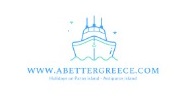1. Welcome to Sifnos island
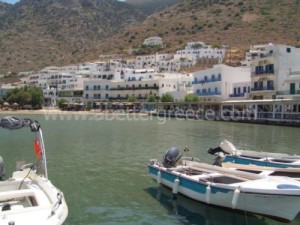
Sifnos is the fourth island in size of the Western Cyclades islands (Kea – Kythnos – Serifos – Sifnos – Kimolos – Sifnos), which form a circle and guard the Virgin island of Tιnos. Sifnos keeps the first place in the circular shape around the sacred island of Apollo.
The island of Sifnos has a triangular shape, an area of 74 square miles and a perimeter of 28 miles. Located just 14 miles away from Paros, 33 miles away from Syros, 12 from Serifos, 8 from Ios and just a four hour journey away from Piraeus, Sifnos is an ideal island for a quiet holiday.
We have created an online guide of Sifnos, please feel free to book your accommodation on Sifnos, to rent a car on Sifnos, read about the villages, the history of the island, the best beaches and more ! ! !
FERRIES TO and FROM SIFNOS
In the summer season, the island of Sifnos is connected by ferries to Piraeus and with the line of islands towards Milos (Kythnos, Serifos, Kimolos and Milos) every day.
The journey to Sifnos from Piraeus is around 5 hours with the normal ferries and with the high speed boats is about 3 hours. You can also find ferries from Sifnos to the islands: Paros, Naxos, Mykonos, Tinos, Andros, Syros, Folegandros, Ios and Santorini.
Out of the summer season the ferry schedules change and so it is important that before you plan your journey to check with the port police of Sifnos or at a travel agency on Sifnos.
The port police of Sifnos: +302284033617
Port police of Piraeus: +302104511310 – 7
2. Activities on Sifnos
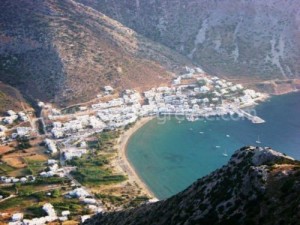
The island, allows you to combine your holidays with walks to discover step by step the history, tradition, culture and nature of the island Sifnos. Sifnos is the ideal island for walkers. The hikers have the opportunity to follow many alternative routes. Get the shops on the island map paths and start exploring or ask travel agencies of the island to take part in organized walking trips made! We recommend it.
Faithful and religious traditions, festivals in Sifnos made at least once a year in most churches and monasteries of Sifnos. These are church services after the end of vespers eat together, the famous Sifnos chickpea soup, olives, meat with potatoes or pasta and plenty of wine of the island.
Sifnos tradition of ceramic art continues by local’s potters as old and there are many picturesque pottery workshops where one can get acquainted and enchanted by the ritual art of the wheel!
In Sifnos you have the opportunity to stroll in monasteries and swim in nice beaches with clear water. Most of these are suitable for water sports. Excursion with your boat or the boat you can combine with fishing.
To Chrissopigi and the Cross of Light (the stavro of farou) will be impressed by the richness of the deep! The fish found here are sterile, bass, snappers, capons, and groupers.
In the south of the island is the island Kitriani. The seabed there is a lot of caves, holes, plates and abstentions that host many fish like breams, lychees, groupers etc.
On the western side of the island stand Vathi that the seabed is sandy hand, gathers not many fish and the bay Vroulidia located above the Kamares. There you will find breams, snappers, mullet, Skaros and many other fish.
Water sports are not lacking from Sifnos, if you like diving or want to live new experiences, the seabed of your Sifnos waits! According to the lovers of underwater activities is for the most beautiful bottoms of Greece. Discover the magical underwater world and discover the unique beauties of Sifnos.
3. Best beaches on Sifnos
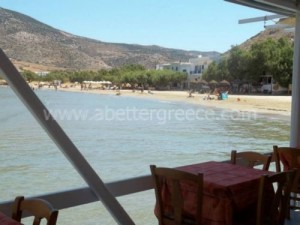
Numerous beaches in Sifnos Island are waiting to be explored. Most of them are easily accessible, without having lost their unique Cycladic character. Sifnos Island is made up of long sandy beaches and small scenic coves, offering a variety of alternatives for those wishing to spend the day by the Aegean Sea.
Sifnos Island is blessed with numerous scenic beaches you can choose from. Pick the easily accessible ones for your convenience and a carefree day under the Greek sun. If you seek organized beaches, a majority of the beaches in Sifnos Island host deck chairs and sun umbrellas. For more private relaxing moments, satisfy your exploration thirst in one of the secluded coves.
Start your refreshing dives at the famous beach of Kamares that has been repeatedly awarded with EU’s Blue flag for its organization, safety and water cleanness. For a lively beach life by the crystal blue waters visit the popular Platys Gyalos and enjoy your day and evening at its long bay. The small contiguous coves of Faros – Fasolou Glyfos and the scenic Chryssopigi bay, are waiting to host your relaxed, private moments in picturesque, cozy scenery. For a sumptuous cosmopolitan aura to your day at the beach choose Vathi beach, where the biggest luxury hotels of the island are situated.
4. Sightseeing on Sifnos
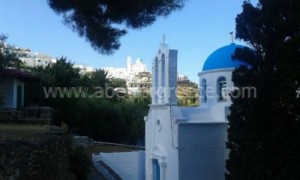
The island’s capital was located at Kastro from antiquity through 1836. The settlement was also the seat of the Archbishop of Sifnos from 1646 to 1797 and the Sifnomilos See from 1797 to 1852. Access to Kastro is through the old vaulted gates or loggias which were once protected by turrets. Kastro’s streets and main square are built over the roofs of single-story dwellings, which are still used as warehouses. The homes chimneys were built perpendicular to the road and marked its path. Kastro is still inhabited; there are a number of restaurants, pastry shops, and accommodations within its walls.
Yialos or Seralia (from the Turkish serai or palace), the ancient port of Sifnos, is located at the southern foot of Kastro, where visitors can find accommodations and traditional restaurants.
The Kastro in Sifnos: Kastro, ( The Castle), was built upon a rocky hill and had been the ancient capital of Sifnos. Nowadays, it has been turned into a lovely village, still maintining its old image, also the old walls are still visible from many sides of the island.A town with an acropolis since ancient times. Stronghold and Castle of the Venetians and capital of Sifnos until 1833.
You will be more than amazed once you grasp just a glimpse of the island’s narrow streets, the architecture of the place with the wooden balconies and the tiled galleries and of course the spectacular view of the sunset, will travel you back in time… Do not forget to visit the beautiful whitewashed churches and the Archaeological Museum in Sifnos, the Painting exhibition which hosts exhibits from well known artists every year. Please check the various websites for events that take place each summer p.e. concerts with well-known Greek artists.
Holy Sepulchre School in Kastro (1687 -1834): Nowadays cemetery of Kastro with its twin churches, Ayios Stefanos and Ayios Ioannis. Worth-seeing is the double-headed eagle of marble on the floor of Ayios Stefanos bearing the date 1762, as well as the Cover of the Holy Table, an offer of monk Agapios in 1820.
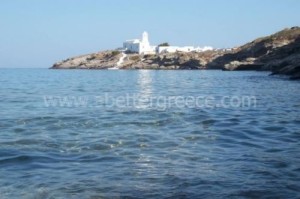
The white tower in Sifnos: One can find approximately 55 ancient towers scattered around the island, which they have been built from the 6th century to 3th century for intercommunication with ancient citadels, by Thucydides, the method of communication has been without any doubt smoke and fire. The only tower which is still in a very good shape, even though centuries have passed over, is the White Tower. You can admire it from the road heading to Platis Gialos.
Traditional settlements in Sifnos: Artemonas, has been famous for its old Mansions, you will be pretty much convinced when taking a stroll along the paved streets during the afternoon. The stately houses with stone fences and pink bougainvillea flowers that give color and vitality to any garden will amaze you. One should definitely visit the island’s largest windmill, situated in the northern part of Artemonas which is still preserved and can be operated at all times, where you will enjoy the spectacular view of the Aegean.
Vathi on Sifnos: Vathi is a beautiful and picturesque sheltered bay with sandy beach and crystal clear waters. The name Deep means that the port is in a deeper trough than the surrounding area. This feeling is created in the visitor, looking at the mountains surrounding the bay of Vathi.
Vathi is 10 km away. from the capital Apollonia and 14km. from the port of Kamares. To reach the Deep follows the road from the port of Sifnos in Apollonia and follow the signs he meets on his way.On the way, you will find the monastery of Fyrogia and after a while you see your right stands the hill of San Andreas with the church on top of built in 1701. At this point is one of the most important archaeological sites of Sifnos. Reaching Deep, at the right edge of the large petal-shape beach is built the Church of Archangels and “Annunciation (17th century).”
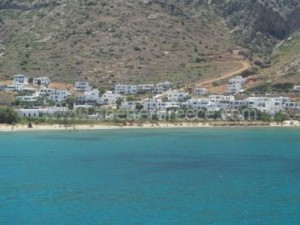
The Archaeological museum of Sifnos: In Kastro you can visit the Archaeological museum of Sifnos. There you can see exhibits from an Archaic collection and Hellenistic sculptors. The ministry of Culture renovated the museum in the early 1980s and until 1986 and has been fully restored since 1986.
The Folklore and Popular Art museums on Sifnos: The Folklore and Popular Art museums are located in Iroon square in Apollonia and is property of Sifnos Association. The museum has a collection of artefacts linked to the island’s traditions, from farming to household furnishings and local dress.
The Ecclesiastical Art Museum on Sifnos: In the monastery of Vrysiani is located the Ecclesiastical Art Museum. The visitors can see a collection of ecclesiastic art is housed in the Moni Vrysianis and includes manuscripts, scrolls, and early editions, a Bible from 1796, relic cases, six-winged standards, chalices, icons, and an embroidered cloak.

Churches and monasteries on Sifnos: There are 227 churches on the island. Several of the island’s churches have been designated historic monuments because of their importance and architectural interest. Among them are the Panayia Angeloktisti at Katavati, the Monastery of Profitis Ilias Psilos, the Chrysostomou Monastery at Kato Petali, Panayia Gournia at Pano Petali, Ayios Antypas at Pano Petali, Ayios Konstantinos at Artemonas, Panayia tis Ammou and Panayia Konghi at Artemonas, Panayia Eleoussa at Kastro, the Panayia Poulati monastery, Panayia tou Vounou, and the Monastery of Panayia Chrysopiyi.
Of particular interest are the churches inside Kastro as well as the churches of Chrysopiyi, Panayia Vrysis, Moni Panayia Vounou, Angeloktisti Katavatis, Ayios Sozon, Panayia Konghi, Panayia Gournia, Panayia Ammos, Ayios Yioryis Afentis, Ayios Loukas, Ayios Konstantinos.
There are 55 ancient towers on the island, scattered in various regions. The oldest date from the 6th century B.C. and the most recent were built in the 3rd century B.C., although only Aspros Pyrgos survives in a good condition. The towers were built after the Samians’ raids and were used to relay messages to the ancient acropolises. Later the tower network was expanded to the entire island. According to Thucydides smoke and torches were used as signals.
5. Villages and settlements on Sifnos
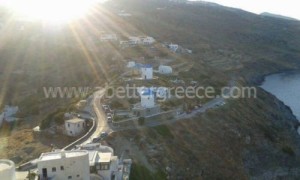
Apollonia: Apollonia, which is also known to the locals as Stavri, has been the capital of Siphnos since 1836. The name Apollonia derives from Apollo, meaning a town dedicated to the worship of the God Apollo. As for the derivation of its common name, Stavri, which dates back to 1677, there are various possible interpretations: it could derive from the male proper name Stavros; from Timios Stavros meaning Holy Cross (there was a church of a holy cross in the vicinity); from its location literally at the crossroads where all the main roads of the island meet; or from the crosswise design of the town plan and houses.
Whatever the derivation of its common name, Apollonia is indeed situated in the geographical center of the island and it is built amphitheatrically on three hills. It is almost linked to the villages: Exampela, Ano Petali and Artemona.
Artemonas: Artemonas is located towards the north of Apollonia in a distance of one and a half kilometer from it. It is the main jewel of the little island of Sifnos. High at the top of the hill only two of the old series of wind mills are preserved in a good condition. From here, the view of Sifnos is panoramic. The visitor can look far away at the surrounding islands, at Kastro, at the central settlements, even at Kamares. It is said that at the site where Panagia of Kochi is built today, according to the tradition, there used to be during the ancient times a worship center of “Ekvatria” Artemis, who was the goddess who used to protect people during their disembarkation from the ships and who also used to safeguard the happy issue of all the cases.
The walk around the paved narrow streets of the village is a unique experience, as the visitor can see some of the most beautiful mansions of the island, in the railed in verdant gardens. The promenade in all the neighborhoods keeps continuous surprises and the image of this marvelous residential complex when it is bathed in the faint light of the afternoon shall certainly touch your soul. The village, with the particular residential development, attracts the visitors in a magic way.
It is the homeland of the great master and national fighter Nikolaos Chrissogelos and of the poet and philologist Ioannis Gryparis. From 1914 to 1998 it was the seat of the homonymous community of Artemonas. The visitor besides from the classic mansions, must also visit the house where the poet Ioannis Gryparis was born and the churches Panayia the Kochi with its interesting architecture, Panayia of Ammos, where one can see the icon Panayia the Monachi, a rare representation of the Virgin Mary without the Holy Infant, and the beautiful church Panayia of Balis and Ayios Spyridonas.
In Artemonas there are hotels, many rooms and apartments to let and many are those who choose to stay there, since it offers the possibility to have peaceful vacation in comparison with the noisy Apollonia. In the village one shall find the best traditional pastry making workshops and bakeries with traditional sweets, famous traditional taverns, stores, gift-shops, steak houses and super markets.
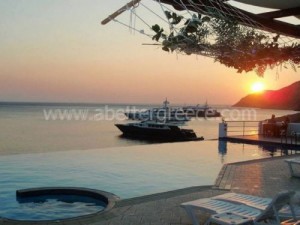
Vathi: Vathi is a beautiful and picturesque sheltered bay with sandy beach and crystal clear waters. The name Deep means that the port is in a deeper trough than the surrounding area. This feeling is created in the visitor, looking at the mountains surrounding the bay of Vathi.
Vathi is 10 km away. from the capital Apollonia and 14km. from the port of Kamares. To reach the Deep follows the road from the port of Sifnos in Apollonia and follow the signs he meets on his way.On the way, you will find the monastery of Fyrogia and after a while you see your right stands the hill of San Andreas with the church on top of built in 1701. At this point is one of the most important archaeological sites of Sifnos. Reaching Deep, at the right edge of the large petal-shape beach is built the Church of Archangels and “Annunciation (17th century).”
Exabela: The traditional village of Exambela is so close to Apollonia (some 2 kilometers far away) that in fact it is conjunct with the capital of the island. Exambela is situated some 8 kilometers southeastern to the port of Kamares and has only a few permanent residents occupied in tourism and agriculture. The name of the settlement indicates that viniculture was the main activity of the locals in the past: Exambela means “vineyards which have been formed through clearance of the scrub”. Exambela is the home village of the poet of the 19th century Aristomenes Provelengios and of the famous chef Nicolaos Tselementes.
Only a few accommodation facilities are available in the village, but the settlement is worth the visit for the interesting sightseeing. At the entrance of the village you will see “Arades” (meaning “rows” in Greek); it is a series of ten old windmills out of use for long time, now in process of restoration, in order to house several activities. The village has several old and very interesting churches as the church of Panayia, dedicated to Virgin Mary and Geroaenicolas (“St. Nicolas the Old”). There is also a small religious museum with interesting collections of religious utensils, sacerdotal vestments and several codices of Gospels. Finally, within the village you may see the ruins of an ancient defensive tower.
At a short distance, some 2 kilometers southern to the village you may visit the Holy Monastery of Kyria Vrysiani or “Panaghia tis Vryssis” (“our Lady of the Spring”), established in the 17th century; the Monastery owes its local name to the cool water of a spring spouting nearby. The visitor should visit the Catholicon of the Monastery, dedicated to the Birth of Virgin Mary, to see the excellent wood carved icon screen. In the sacristy of the monastery are kept several religious utensils and relics, as sacerdotal vestments, old icons, gospel codices, precious reliquaries and old books.
Several stores for every day provisions, as well as gift and souvenir shops are available in the village. You will also find a few traditional cafés and small restaurants serving the famous local delicacies.
The devout locals along with the residents of the island and numerous visitors celebrate the Birth of Virgin Mary on the 8th of September with a great local religious feast (“panigiri”).In case of emergence the corresponding services of the nearby capital Apollonia (less than 2 kilometers northern to Exambela) are available for you.
Access to Exambela from the port of Kamares and from Apollonia is possible by public buses running regularly, by taxi and by private means (car or motorbikes). If you like walking, you would certainly enjoy walking from Apollonia to Exambela and back, an ideal route for the fans of walking.
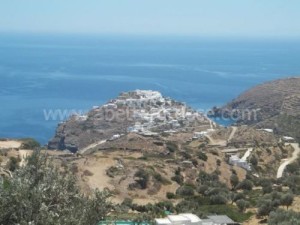
Kamares: Kamares is the settlement arranged around the port of the island, situated within the homonyms cove, some 6 kilometers northwestern to the capital Apollonia. The port is in use for more than a century, that is to say, from the period when the exploitation of the mines of the island was reactivated. The settlement owes its name (meaning “chambers” or “arches” in Greek) to the numerous caves, natural or carved in the rocks of the southern coast of the cove. These caves, used in the past for various purposes, house today stores, cafés, or bars; some of them are also used as shelters for the boats of the locals in winter. The settlement counts some 200 permanent residents, occupied in tourism.
Being the point of arrival, Kamares receive a lot of tourists and offer good tourist facilities for accommodation, eating, shopping and amusement. The tourist will find shops of various kinds offering all goods and services necessary for a comfortable and pleasant staying and several bars and clubs for “hot” nightlife.
At the western part of the village the visitors will see the luxurious villas of the wealthy people of Sifnos, who in their majority had immigrated to various places in the past. At the foot of the mountain Ayios Symeon, in the quarter of Ayia Marina (or “Pera Banda” as the locals call it) you will find many taverns with traditional dishes and local delicacies. In the broader area of the port you will see the ruins of several old buildings, old churches, as well as the ruins of kilns and the old wharf for the loading of ores; this latter is a construction of 1909. Southern to the port it is situated the Holy Monastery of Panayia “Tosso Nero”, dedicated to Virgin Mary. Access to the Monastery is possible via the footpath or by the excursion boats departing from Kamares.
The locals organize great religious feasts (“panighyri”) to celebrate the name day of Profetes Elias tou Troulakiou (Prophete Elijah) on the 20th of July and the Assumption of Virgin Mary taking place on the 15th of August at the Monastery. A third religious feast takes place on the 1st of September in honor of Ayios Symeon, whose church is situated on a steep hillside, some 6,5 kilometers northeastern to the port.
Access to Kamares from Apollonia is possible by public buses running regularly, by taxi and by private means (car or motorbikes). Of course, as Kamares is the port of the island, it is the point of arrival of the visitors from outside Sifnos. So, if you reach the island by yacht, the port of Kamares is available for mooring and water and fuel supply.
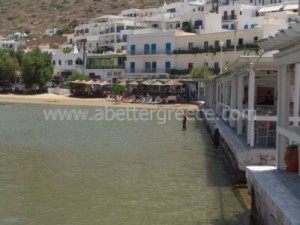
Kastro: Kastro, ( The Castle), was built upon a rocky hill and had been the ancient capital of Sifnos. Nowadays, it has been turned into a lovely village, still maintaining its old image, also the old walls are still visible from many sides of the island.
You will be more than amazed once you grasp just a glimpse of the island’s narrow streets, the architecture of the place with the wooden balconies and the tiled galleries and of course the spectacular view of the sunset, will travel you back in time…
Do not forget to visit the beautiful whitewashed churches and the Archaeological Museum in Sifnos, the Painting exhibition which hosts exhibits from well known artists every year.
Kato Petali: Kato Petali is situated at the east side of Apollonia. When the visitor looks the village from a distance, it looks as if it is standing imperiously on the beautiful environment of Sifnos, which is developed on a small hill. The settlement spreads around a central paved square, where you shall find also the beautiful church of Zoodohos Pigi with the castellated bell towers.
East from Kato Petali, there is the historic monastery of Agios Ioannis Chrissostomos, where, according to the tradition the first Greek School of Sifnos was lodged and where the School of Agios Tafos has been transferred as “Hellinomouseio” of Sifnos. (1835-1854), before being transferred to the school of Agios Artemios in Apollonia. At the south border of the village, there is the picturesque church of Panagia of Koukkias (Myrtidiotissa 1614). The architecture of the settlement repeats the Cycladic standards and the village is one more hospitable corner for the visitor.
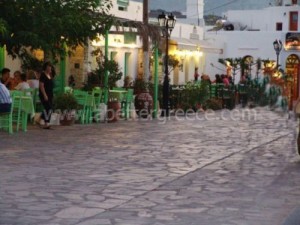
Pano Petali: Ano Petali is the village with the most beautiful view of the eastern side of the island. Standing in the courtyard of Saint John, you can see not only all the main villages in the center of Siphnos but also Kastro and the Aegean in the distance, a truly panoramic view.
The most southern of the three villages that used to form the municipality of Artemonas, its boundaries begin exactly where Apollonia ends, at Taxiarchaki and end where the village of Saint Loukas begins, the stone bridge on the main road that crosses the island, a spot known as Gournia. Of architectural and historical interest here is the church of Saint Antypas (1636), the location of a school founded by Nikolaos Chrysogelos and operated by his pupil, Georgios Psaraftis during the period of the Greek revolution against the Turks. Ano Petali has a hotel, rooms for rent, a supermarket, a shot of electrical appliances, a paint shop, and the well-known traditional coffeehouse of Phelou.
Platis Gialos: The beach of Platis Gialos is the most cosmopolitan beach of the island. It is in the south part of the island, 12km from Apollonia. It’s the most beautiful beach in Sifnos and one of the biggest of Cyclades islands (awarded with the Blue Flag). It is in the safe arms of a cove and never has eastern winds. Around the beautiful beach is the homonym settlement. Here you will find many hotels and rooms to let. After your bath you can eat in taverns along the shore fresh fish, roasts and traditional dishes. In the region you will see a lot of vineyards and olive groves. There are many pottery workshops. Visit them and take information for the secrets of this art. Don’t miss buying beautiful ceramic designs. Platis Gialos has big archaeological interest. In the northeastern part of the beach are the remains of the White Tower. It is the most known from the 57 ancient towers in the island.In the south part, in location Akrotiri excavations brought into light a prehistoric cemetery.In the north part of the beach, on the top of the hill is built the monastery of Panayia Vounou dated from 1813. The view from up there is magic.
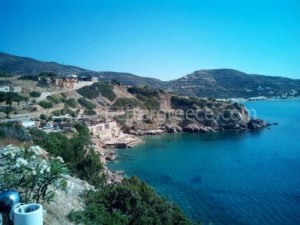
Faros: The cute scenic settlement of Faros is situated at a distance of 7 kilometers southeastern to Apollonia, at the inner part of a cove, well protected from the northern winds. The settlement owes its name to the big lighthouse standing at the entrance of the cove, just beside the monastery of Stavros. Until the end of the 19th century it served as the main port of Sifnos; even today this port is the safest of the island. The village counts some 100 permanent residents occupied mainly in tourism.
This nice village of fishermen offers some accommodation facilities, good food at the fish taverns by the seaside and some shops for the necessary provisions. For swimming you may go to three nice and scenic beaches, successive to one another. They are: the beach of Fassolou, the beach of Faros and that of Glyfo. All of them are pretty quiet and ideal for relaxing. From Faros you may also go to the beaches of Chryssopege and Apokofto, following the footpath.
At the western part of the cove you may see the ruins of the old constructions used in the past for the loading of the ores. The ships brought the material to Lavrion, in Attica. At the very depth of the cove you will see a beacon.
In case of emergence the corresponding services of Apollonia, 7 kilometers far away to the Northwest, are available for you.
Access to the beach from the port of Kamares and from Apollonia is possible by rented or private car and motorbikes. The small safe port of the settlement is available for mooring as well as for water and fuel supply of small boats and yachts.
Cheronissos: The toponym Cheronissos means the part of land which is washed by the sea and which is connected with the mainland from only one of its sides. It is situated at the northeast end of the island. At the past, it was a very vivid settlement of potters.
It is a beautiful fishermen village, protected in a small gulf, which maintains a unique simplicity. The two taverns on the beach are literally built on the sea. Whichever moment of the day you visit it, you shall be surprised by the calm, which is interrupted only by the sound of the fishing boats passing by the little port. It is not accidental that many of the natives have little houses here, which they use as summer, country houses.
At Cheronissos there are many choices of accommodation, a mini-market. At the small pottery stall, which is open by the sea, one can find beautiful handmade utensils of traditional Sifnos’ art, manufactured with unique inspiration. Do not loose the opportunity to genuflect in the beautiful picturesque little monastery of Ag. Polycarpos, on the beach!
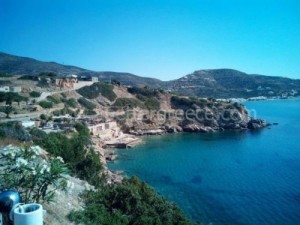
Chrissopigi: Chrissopigi is situated at the southern coast of the island, within an impressive natural environment by the seaside. The fans of nature consider this place as one of the best in Sifnos. Chrissopigi is in fact a rocky peninsula between Faros and Platys Gialos, at a distance of 8 kilometers southeastern to Apollonia. The rock, the Monastery and the landscape of the area constitute the poles of attraction for the numerous visitors of the place.
Accommodation and food and drink in small coastal taverns are available in the area around.
The most important sightseeing and the characteristic of the area is the monastery of Panayia, dedicated to Virgin Mary. The monastery was constructed in 1650, when the devout residents of the island found the icon of Zoodochou Pigi (Virgin Mary, the Spring of Life), which, according to the tradition, had miraculously arrived there from the sea. If you feel like, you may stay for a few days in the Monastery; you will be housed in one of the few cells available for the visitors. If you are around on the eve of the Ascension Day (in late May or early June), you may take part to the great local religious feast (“panighyri”), taking place at the Monastery.
6. The history and mythology of Sifnos
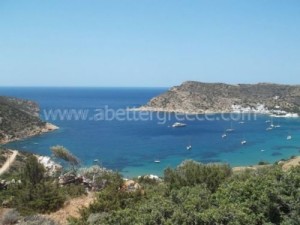
Sifnos has been famous for its gold and silver mines (region of Ayios Sostis).
With the richness acquired from these mines the inhabitants created their city, with an “agora” and a “prytaneion” (probably in the area of Kastro) and they constructed the elaborate “Treasure of the Sifnians” (535-530 B,C,) in Delphi, to keep their gold inside. Every year they used to send to Delphi -as an offer to Apollo- a golden sphere equal to the 1/10 of the gold extracted from their island. But the Sifnians soon became cunning and they sent to Delphi only a gold-plated sphere. The god became very furious with them and the mines of Sifnos were all of a sudden destroyed. Moreover, some Samians in exile, purchased by the tyran Polycrates and without the support of the Lacedaemonians, started for Sifnos with their boats in order to ask money. They knew very well that the Simians were rich. A red boat approached the island and the deputation came to the city. They asked for a loan of ten “talanta”. But the foolish Sifnian leaders could not decide. A great, destructive battle begun then. The cost was one hundred “talanta” -an exceedingly high sum for that time. After that the Samians went away. With that money they bought the island of Hydra from the inhabitants of Ermionis. Later, they went to Crete, where they established the city of Kydonia (Herodot’s History).
Sifnos was economically ruined. The oracle of Pythia had become true. The Sifnians, while constructing their treasure in Delphi, had asked Pythia until when they would maintain their richness. And her oracle had been as follows:
“When in Sifnos the “Prytaneion” becomes white
as well as the fringes of the “agora”,
then a wise governor should protect it from a wooden army and a red messenger”
The wooden army were the boats and the red messenger was the first of them painted red.
Apart from these stories however, the truth is that the mines were exhausted or destroyed at a certain time and the Simians came to an economic deadlock. However, they did not change their beliefs.
They did not give way to the Persian king Darius and they took part in the sea-battle of Salamis (480 B.C.) with a fifty row-men ship of their own. After the battle of Plataeai (479 B.C.), they offered.like the rest of the Greeks, the loot to the Gods: a golden tripod with snakes around its base and the name of the Simians incised on it.
After the Persian wars (490-450 B.C.), Sifnos remained faithful to Athens and paid taxes to maintain its autonomy. When the Athenians lost the battle at Chaironeia (338 B.C.), then Sifnos came under the power of Philip of Macedonia.
In 332 B.C. two admirals of Alexander with 160 ships chased the fleet of the Persians completely out of the Greek seas.
At the same period the King of Sparta Aghis 3rd, son of Archidamos, met in Sifnos with the Persian Farnavazos, in order to make the Athenians desert Alexander.
After the death of Alexander, Sifnos came under the power of one of his successors, Antigonos, up to 311 B.C. and then under the Ptolemies of Egypt until 202 B.C. After a series of sea-battles among Egyptians, Macedonians, Rodians and Romans, Sifnos was occupied by the Romans (146 B.C.-324 AC.).
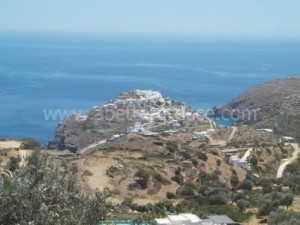
In 162 B.C. Cretan pirates, allies of the Cilicians, chased by the Rhodians, approached the coasts of Eastern Sifnos and started to attack the acropolis of the city. They took off there and, while they had promised that they would not harm anybody or anything, they begun to plunder the temples and the people, as soon as they passed the walls. But, when they tried to go away, they suffered a clear and exemplary punishment. They vanished in the depth of the sea and nobody saw them again. It was then that the system of observatories was established in Sifnos with the expansion aid construction of special towers for ie fires (fryctoreia). Whoever was the first to give the message for the presence of corsairs near the island, was considered as benefactor of the island, These towers of observation are called, after the latin word, “vigles” and the men watching “viglatores”.
The Roman period (146 B.C.- 324 AC.)
Nothing of special interest happened during that penod. Because of the corsairs, the people started to construct their houses away from the sea. Roman cemeteries and marble sarcophagi, as well as vessels of glass found in Sifnos, all show the impact of that times on the life of the island.
The Byzantine period (324-1207 A.C.)
Sifnos, just like the whole of the Cyclades, is part of the Byzantine Empire. The raids of the corsairs stopped until the 9th century and life was peaceful on the island. Piracy started again during the 11th century. The waves of the Aegean brought new raiders to the island: Robert Guiscard, the duke of Calabria, Domenico Micheli, the doge of Venice, the fear of the Greeks, as he was called. Hebrews made also their appearance on the island; a quarter of Kastro still bears their name,
The Crusades period (1207-1307)
At the beginning of this period, Marcus A Sanudo.duke of Venice, occupied Sifnos and some other islands with two ships of his own. Later, he established the duchy of Naxos, keeping for himself the islands of Syros, Paros and Naxos, while he gave Sifnos and some other smaller islands to his collaborators.
The Frankish period (146BC – 324 A.C)
In 1307 Sifnos was occupied by Antonio da Corogna from Spain. He equipped a galley and, without taking into account the protest of the Venetians, he took the island and became the first frankish despot of Sifnos. His successors were: Yannoulis A da Corogna, Nicolas B, Yannoulis B, Nicolas C, Yannoulis C and his brother Toulianos, who died in 1463. Then, the only heiress, Marietta, daughter of Yannoulis C, who, since 1456, had been married to Nicolo Cosadino (from Bologna of Italy), succeeded together with her husband to the dynasty of da Corogna on the island.
The da Corogna constructed their castle on the ancient city, in Kastro, The Cosadinos expanded it and made it richer. Seralia, the small port of Kastro, developped at those times.
On an octagonal stele within Kastro we can read the inscription “JANOULOU ILCORON” and the date: 1374.
Angelos N.Cosadino was the last despot of the island, chased by the Ottomans in 1617. During that period the textile factory and the basketry have helped alot the economy of the island. The Francs that remained on the island, were peacefully assimilated with the rest of its inhabitants. Some last names exist even today: Vaos, Procos, Rafeletos, Moschoutis, Syrigos, Proveleghios, Sperantzas and many others.
The Ottoman occupation period
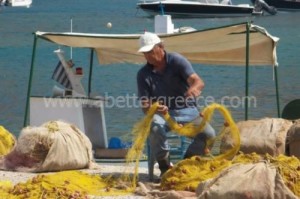
Sifnos was under the rule of a Turkish admiral (Kapudan Pasha), but the Turkish army has never remained on the iisland! The Turks used to come from Paros for the collection of the capital tax (: “charatsi’) through the heads of the local committees and then they left again.
The Turkish domination had been interrupted for four years (1770-1774), when the Russians, under admiral Spyridof, occupied the Cyclades (period of Catherine the Great).
Sifnos took part in the revolution of 1821 only the second year, because the opinion of the opposition and of the consuls of the foreign powers had suppressed the desire and the dreams of the simple people. But, during that period Nicolaos Chryssoghelos (1780-1857), a great teacher of the nation, awakened the population and made them dream of liberty and believe that it was near. He himself, who was then teacher at the School of the Holy Sepulchre in Kastro, and his brother George were the first to raise the flag of the revolution. They created an army of about seventy old students and, through Hydra, they went to Peloponnese to fight.
The activity of Chryssoghelos has also been multi-sided, as “Secretary of Religious matters and of Public Education” during the period of the goverment of Capodistria and as Senator during the reign of Otto. His grave is in “Panaidaki” and his bust in Artemonas, his father village.
7. Rent a car on Sifnos
Cars can be delivered to the port or to your hotel and be picked up again there, too.
Insurance is usually third party but full car insurance is also available upon request. The vehicles are rented out for a minimum time of 24 hours and prices are negotiable.
It is best to pre-book a car as it’s not easy to find what you are looking for in the high season on Sifnos.
| COMPANY NAME | TYPE OF BUSINESS | LOCATION | TELEPHONE NUMBER |
| Proto moto car rental | Rent a car / motorbike | Kamares (main port) | +30 22840 33791 |
| Sifano | Rent a car / motorbike | Kamares (main port) | +30 22810 33044 |
| Plus Niki | Rent a car / motorbike | Sifnos |
+30 2284033993 / +30 6972770480 |
8. Useful information about Sifnos island
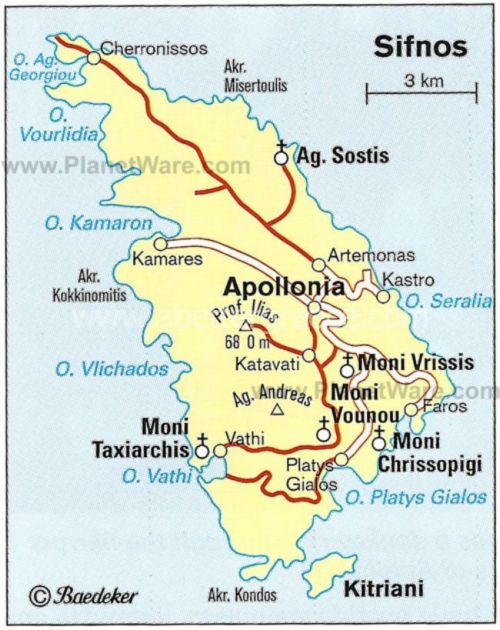
Sifnos is the fourth island of the Western Cyclades (Kea – Kythnos – Serifos – Sifnos – Kimolos – Sifnos), which form a circle and guard the Virgin island of Tιnos. Sifnos keeps the first place in the circular shape around Delos, the sacred island of Apollo.
The island of Sifnos has a triangular shape, an area of 74 square miles and a perimeter of 28 miles. Located just 14 miles away from Paros, 33 miles away from Syros, 12 from Serifos, 8 from Ios and just a four hour journey away from Piraeus, Sifnos is an ideal island for a quiet holiday.
We have created an online guide of Sifnos, please feel free to book your accommodation on Sifnos, to rent a car on Sifnos, read about the villages on Sifnos,the history of the island, beaches and more ! ! !
FERRIES TO and FROM SIFNOS
In the summer season, the island of Sifnos is connected by ferries to Piraeus and with the line of islands towards Milos (Kythnos, Serifos, Kimolos and Milos) every day.
The journey to Sifnos from Piraeus is around 5 hours with the normal ferries and with the high speed boats is about 3 hours. You can also find ferries from Sifnos to the islands: Paros, Naxos, Mykonos, Tinos, Andros, Syros, Folegandros, Ios and Santorini.
Out of the summer season the ferry schedules change and so it is important that before you plan your journey to check with the port police of Sifnos or at a travel agency on Sifnos.
The port police of Sifnos: +302284033617
Port police of Piraeus: +302104511310 – 7
Travel agencies on Sifnos :
| AEGEAN THESAURUS TRAVEL | +30 22840-33151 / +30 22840 33527 |
| CHRISOPIGI TRAVEL | +30 22840-71523 |
| KATSOULAKIS TRAVEL | +3022840-31700 & +3022840 31004 |
| PODOTAS GROUP | +3022840-33081 & +30 22840 31793 |
| XIDIS TRAVEL | +30 22840-31895 & +30 2284031217 |
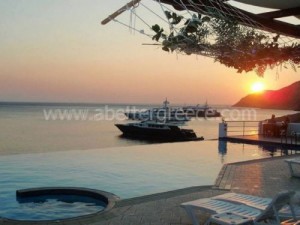
For online ferry tickets and bookings, please : OpenSeas.
The nearest airports to Sifnos are the airports of Milos and Paros. There is a heliport close to the monastery of Panayia Vrisianis in Exabela on Sifnos.
WE WISH YOU A GOOD JOURNEY
USEFUL TELEPHONE NUMBERS ON SIFNOS
| Main police station on Sifnos | +30 22840 31210 |
| Port Police on Sifnos | +30 22840 33617 |
| Hospital / Health center on Sifnos | +30 22840 31315 |
| Tourist information office on Sifnos | +30 22840 31977 |
| Tourist police on Sifnos | +30 22840 31210 |
| Travel agency on Sifnos | +30 22840 33151 |
| Travel agency on Sifnos | +30 22840 32373 |
| Taxi station on Sifnos | +30 22840 31216 |
| Bus station on Sifnos | +30 22840 31345 |
| Taxi driver on Sifnos | +30 22840 31656 / +30 69 44 69 64 09 |
| Taxi driver on Sifnos | +30 22840 33570 / +30 69 44 90 09 72 |
| Taxi driver on Sifnos | +30 22840 31295 / +30 69 32 40 34 85 |
| Taxi driver on Sifnos | +30 22840 31719 / +30 69 44 64 26 80 |
| Municipality of Sifnos | +30 22840 31354 |
| Post office on Sifnos | +30 22840 31329 |
| Water company (faults) on Sifnos | +30 22840 |
| Electricity company (faults) on Sifnos | +30 22840 |
| Telephone company (faults) on Sifnos | +30 22840 |
| Dentist on Sifnos | +30 22840 32350 |
| Dentist on Sifnos | +30 22840 32004 |
| Children’s doctor on Sifnos | +30 22840 31315 |
| Pharmacy on Sifnos | +30 22840 33541 / +30 22840 33033 |
| Museum & Monastery of Vrisis on Sifnos | +30 22840 31335 |
If you would like to visit the beautiful island of Sifnos, you may book your accommodation through our site and get a special discount. If you have fallen in love with Sifnos and you wish to stay, then perhaps you should look at some of the real estate on Sifnos. If you need any extra information, then please contact us here information@abettergreece.com or +30 69 34 620 501 / +30 22840 24 879
